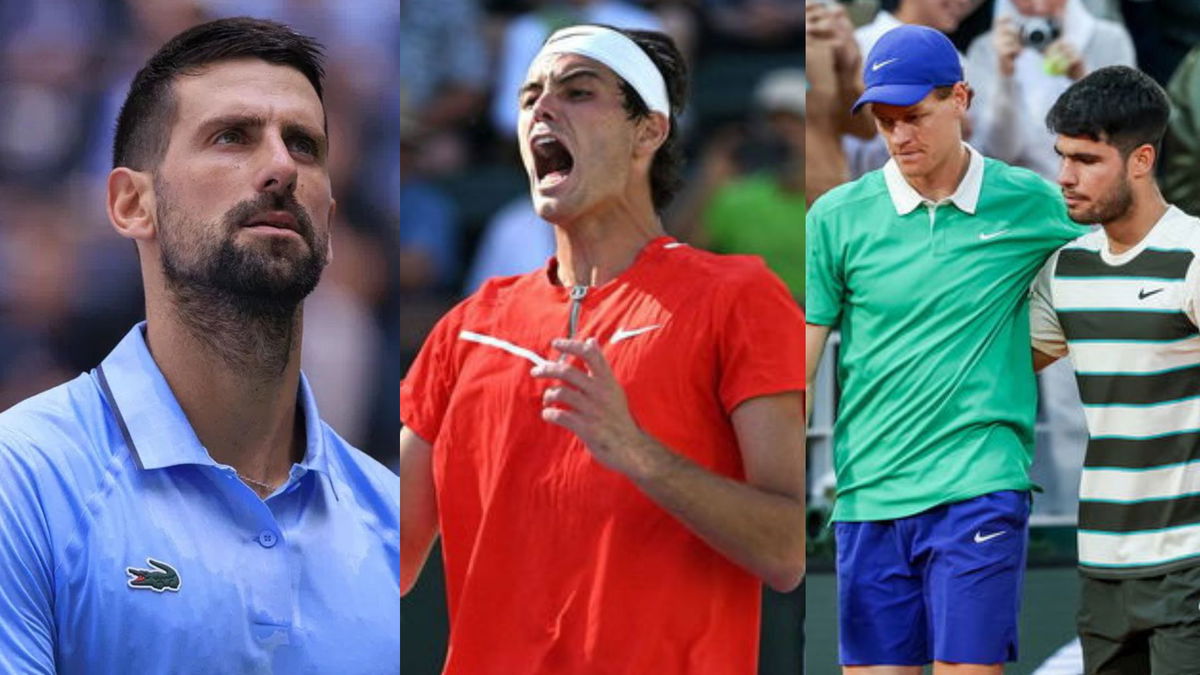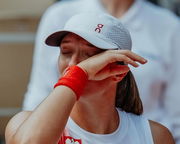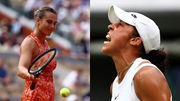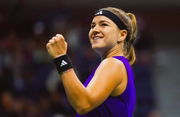
Imago
Credits: IMAGO

Imago
Credits: IMAGO
“This is the tennis that I want to play. Yeah, it makes me so happy to play at that level,” Taylor Fritz said after his historic win for Team World at the 2025 Laver Cup against Carlos Alcaraz. For a player who finally managed to defeat the reigning World No. 1—on his fourth attempt no less—with a commanding 6-3, 6-2 scoreline, Fritz has every reason to back his performance. His secret? “Taking advantage of those big moments, pulling the trigger, just going out and taking it, you know?” But what if we told you that all he really needs is one key adjustment—one that could help him consistently challenge not only Alcaraz, but also the likes of Jannik Sinner and Novak Djokovic?
Watch What’s Trending Now!
Yep, we are not joking. This advice was cooked on the latest episode of the Australian Open TV podcast segment, where Tennis Australia’s data extraordinaire, Simon Rea, shared his insights on Taylor Fritz having been able to get a grasp on his game on slower courts to defeat big names. Though Simon Rea found it “really instructive” to hear Fritz speak about his determination to play a more aggressive brand of tennis, he emphasized that leaning too much on his safe and consistent game—what the American himself jokingly described as “my joke this year, that I’m a bot that pushes”—has not been the recipe to truly trouble the sport’s biggest stars.
Don’t believe us? Just look at his head-to-head record: against Alcaraz, he trails 1-3; against Sinner, it’s 1-4, with three straight-set losses in their last three meetings over the past 12 to 18 months; and against Djokovic, he’s yet to register a single win, standing at 0-11. This only prompted Simon to dive a little deeper into the challenges Taylor faces when going up against these top players, and he came to a rather interesting conclusion.
ADVERTISEMENT
“I think he’s caught a little bit between on his second serve. So all of those players are able to impact on his second serve,” said Simon Fea, noting that, if Fritz were present, he might acknowledge that his athleticism, physicality, and movement aren’t as dominant as they are for players like Alcaraz, Sinner, or Djokovic. That explains why the 27-year-old loves to play to dictate points and apply pressure. However, even when his second serve reaches mid-160s km/hr, it isn’t enough to challenge the very best.

Imago
Image Credits: Laver Cup/Instagram
That only results in his opponents quickly taking control of the rally, exploiting his predictability on placement. “They get an opportunity on the second serve, where he comes unstuck against them, He’s very predictable generally with his location on second serve. Even at 165ks an hour on second serve, if they know where it’s coming, they will impact you,” asserted Fea, something which he had been stressing on for a long time.
ADVERTISEMENT
In fact, in Fea’s eyes, that’s exactly the kind of limitation that even the greatest players struggle with in such situations. “If they have a read on your serve and you become predictable, they will hurt you, and they will hurt you every time. And that I think is the price that Taylor Fritz is paying,” added Fea.
Indeed, quite an analysis from Tennis Australia’s data extraordinaire. While it’s true that one of Fritz’s key strengths lies in his capacity to identify weaknesses in his game plan and address them honestly, the question is, is there any solution to the problem of second serve identified by Simone Fea?
ADVERTISEMENT
The secret ingredient Taylor Fritz needs to shine against big names
Of course, with such a unique problem identification, Simon Fea also brought an interesting solution. “He either needs one of two things or perhaps both: more variety on a second serve or much more speed,” said the analyst. Other key points shared by the analyst were that Fritz may need to risk a few more double faults if he wants to elevate his second serve to the next level.

Imago
Image Credits: Laver Cup/Instagram
Currently, mid-170s km/h remains largely unexplored territory for the American, though he did experiment with higher speeds at the Laver Cup. On slower courts in San Francisco, when Fritz’s serve reached 170 km/h, even Carlos Alcaraz struggled to make an impact on his second delivery. Rea emphasized that Fritz has two options: either vary the placement significantly to keep opponents off balance or increase the pace considerably.
ADVERTISEMENT
At 165 km/h, a second serve simply isn’t enough to trouble the sport’s elite—it needs to reach around 175 km/h, and even then, there are no guarantees it will fully challenge them. “If I were coaching, it might be work, and I’m not for good reason, I’d be working on more variety on the second serve,” concluded Simon Fea.
Top Stories
Iga Swiatek Visibly in Tears Despite Thrashing Rival at the United Cup

Who Is Aleksandar Kovacevic’s Girlfriend Sophia Sinacola? Everything You Need to Know About the American’s Biggest Support

ATP Shanghai: Stan Wawrinka’s Girlfriend Beams With Pride as She Drops Enchanting Reaction to His Thrilling Opening Round Victory

Aryna Sabalenka Takes Revenge From Madison Keys on Australian Soil

Karolina Muchova Snaps Elena Rybakina’s 13-Match Winning Streak to Reach Semi-finals in Brisbane

While the problem and its solution are there, the only thing that remains to be seen is how Taylor Fritz is able to work on this.
ADVERTISEMENT
ADVERTISEMENT
ADVERTISEMENT
ADVERTISEMENT

